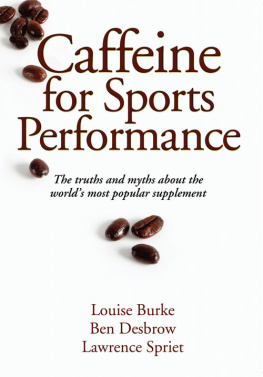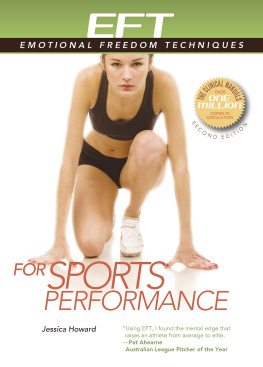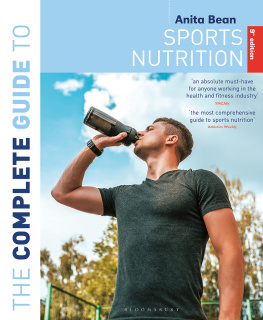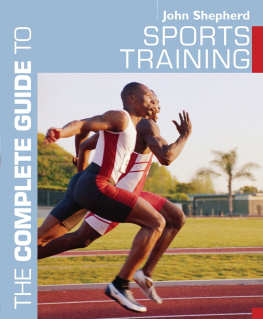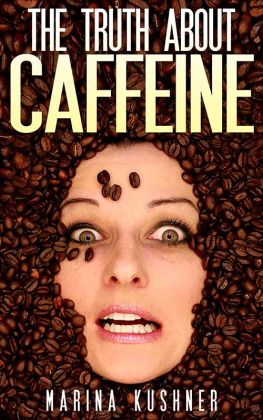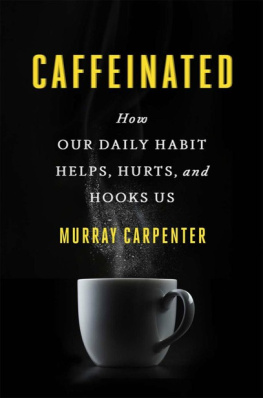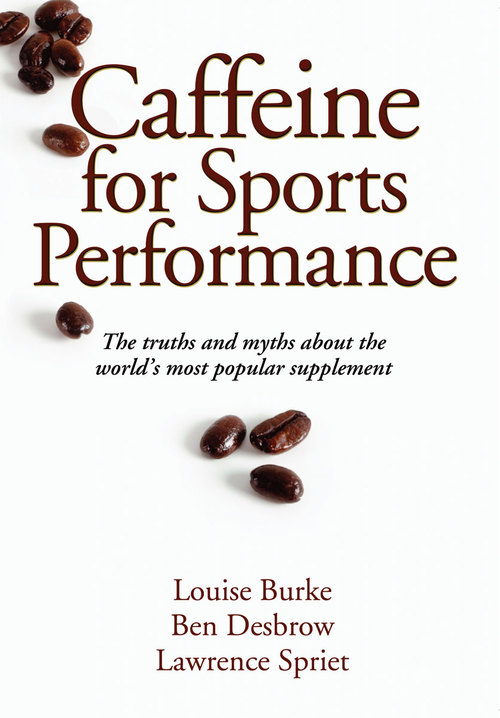
Library of Congress Cataloging-in-Publication Data
Burke, Louise, 1959
Caffeine for sports performance / Louise Burke, Ben Desbrow, and Lawrence Spriet.
pages cm
Includes bibliographical references and index.
1. Athletes--Nutrition. 2. Athletes--Health and hygiene. 3. Caffeine--Health aspects. I. Title.
TX361.A8B88 2013
613.8'4--dc23
2012049486
ISBN-10: 0-7360-9511-X (print)
ISBN-13: 978-0-7360-9511-2 (print)
Copyright 2013 by Louise Burke, Ben Desbrow, and Lawrence Spriet
All rights reserved. Except for use in a review, the reproduction or utilization of this work in any form or by any electronic, mechanical, or other means, now known or hereafter invented, including xerography, photocopying, and recording, and in any information storage and retrieval system, is forbidden without the written permission of the publisher.
The web addresses cited in this text were current as of April 2013, unless otherwise noted.
Acquisitions Editor: Tom Heine
Developmental Editor: Jacqueline Eaton Blakley
Assistant Editor: Anne Rumery
Copyeditor: Alisha Jeddeloh
Indexer: Andrea Hepner
Permissions Manager: Martha Gullo
Graphic Designer: Joe Buck
Graphic Artist: Tara Welsch
Cover Designer: Keith Blomberg
Photograph (cover and interior): Neil Bernstein
Art Manager: Kelly Hendren
Associate Art Manager: Alan L. Wilborn
Illustrations: Human Kinetics, unless otherwise noted
Printer: Versa Press
Printed in the United States of America
10 9 8 7 6 5 4 3 2 1
The paper in this book is certified under a sustainable forestry program.
Human Kinetics
Website: www.HumanKinetics.com
United States: Human Kinetics
P.O. Box 5076
Champaign, IL 61825-5076
800-747-4457
e-mail: humank@hkusa.com
Canada: Human Kinetics
475 Devonshire Road Unit 100
Windsor, ON N8Y 2L5
800-465-7301 (in Canada only)
e-mail: info@hkcanada.com
Europe: Human Kinetics
107 Bradford Road
Stanningley
Leeds LS28 6AT, United Kingdom
+44 (0) 113 255 5665
e-mail: hk@hkeurope.com
Australia: Human Kinetics
57A Price Avenue
Lower Mitcham, South Australia 5062
08 8372 0999
e-mail: info@hkaustralia.com
New Zealand: Human Kinetics
P.O. Box 80
Torrens Park, South Australia 5062
0800 222 062
e-mail: info@hknewzealand.com
E5172
For Anne, Andrew, Stephanie, and Sarahyou keep me high on life, and then some!
Lawrence
For Jane, Jemima, and Ellamy three strongest addictions.
Ben
For John and Jack, the boys who give me wings, and in honor of the Coke habit of the older one and the caffeine-free energy of the younger. Things go better with you two around me.
Louise
Contents
Preface
Professor Ron Maughan, a world-renowned sport nutrition expert, often talks about his three laws of dietary supplements and sports performance:
- If a supplement works, its probably illegal (for use in sport).
- If a supplement is legal, it probably doesnt work.
- There may be exceptions.
This book is about one of the exceptions.
Caffeine is a fascinating substance that has become entrenched in our everyday lives. Around the world, most adults consume it on a daily basis in a variety of forms. Many people consider their caffeine habits to be an important social activity or linked to their quality of life or dietary enjoyment. In fact, the underlying reason for caffeine intake is usually performance. Whether we realize it or not, most of us consume caffeine to help us get through the day feeling better, having more energy, or being able to achieve our daily tasks more effectively. Most people seem to work out a way to get the best out of the ability of caffeine to assist with these goals. At times, however, some of us get it wrong and suffer from side effects or poor use outcomes. We have had centuries of experience with caffeine intake to get to this point. Nevertheless, scientists and health experts have developed some general guidelines for the safe use of caffeine, and there is always new information coming from research on caffeine.
In this book, we look at caffeine from the perspective of sports performance. We will find that although there is a history of caffeine use in sport, the science behind it is just decades old. Consequently, it is still on a reasonably steep learning curve that has been sidetracked at times. It is only recently that some new insights into caffeine and sports performance have allowed us to realize that it has more similarities to the general populations use of caffeine than we previously thought. There is a lot to learn from our knowledge and experiences of everyday caffeine use that could be applied to this specialized area.
Our journey through the caffeine story takes the following path. Chapter 1 presents a brief history lesson on the discovery of caffeine and the evolution of the drinks that provide the main sources of caffeine in our everyday eating patterns and social rituals. Youll also find some background information on how caffeine was used in sport and attracted the attention of exercise scientists over the decades preceding the 1980s, from where this book will pick up the tale in more detail.
Chapter 2 summarizes the way caffeine acts on our bodies at various levels of intake, trying to explain how it could enhance sports performance. This is a chapter with technical details that will not appeal to every reader. Feel free to skip it, but know that we have included this information because many athletes and coaches have developed a sophisticated interest in the chemistry and biochemistry behind supplements. At the very least, it may help you to make sense of the claims made by manufacturers of sport supplements, who often try to market their products by blinding with science (or quasi-science).
Chapter 3 will hopefully bring all readers back to the fold, providing information on where caffeine is found in both the general food supply and in specialized products and how much you can count on consuming from these sources. Explanations of the regulation of caffeine in foods and supplements around the world will help to explain why certain products are found in some countries but not others. In chapter 4, youll learn how weve come to make use of these caffeine sources, by habit, accident, or design. We will summarize typical patterns of caffeine use in everyday diets as well as specific intakes by various populations, including athletes.
The next chapters of the book work through the questions that every athlete should ask when considering the use of a supplement: Does it work? Is it safe? Am I allowed to use it? In chapter 5, we delve into the modern research literature to isolate the studies on caffeine and exercise that have relevance to the real world of sports performance. We examine the evidence that caffeine enhances the performance of various types of sporting events, and we find which protocols of caffeine use (sources, doses, and timing of intake) provide consistent results. Well even try to leave you with the tools to extract the bottom line from future studies of caffeine and sports performance.
Once you know whether caffeine is likely to offer benefits for your type of sport, youll want to consider the information in chapter 6 on health risks, side effects, and general cautions associated with such caffeine use. Chapter 7 follows up with the position of caffeine in antidoping programs and the historical changes to this position. Caffeine in sport remains an area that is emotive and often misunderstood.
Next page
